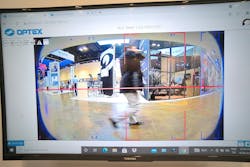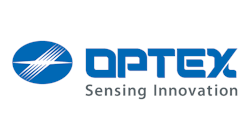Editor's note: In case you missed it, be sure to check out all of Steve Surfaro's coverage from Day 1 of the show here.
GSX 2021 continued on Tuesday with prompt exhibitor attention and the ability to network with different attendees. Some attendees used the time to reconnect, but there were many first-time attendees, global security managers, entrepreneurs seeking investment opportunities, new solution providers seeking venture capital and “regional” vendors expanding to national trade shows.
Here are few of the exhibitors I had a chance to catch up with on the second day of this year’s show:
Astrophysics
Based in Industry City, Calif., Astrophysics supports high risk facilities like virology labs, pharmaceuticals, semiconductor development, utilities, logistics and cargo inspection.
With a rebirth of differential threats and unexpected methods of hiding weapons, explosives, illegal drugs and intellectual property, the X-ray screening market is entering a new cycle of innovation. A razor blade or knife blade easily recognized when placed in the same plane as a flat briefcase becomes invisible when positioned on its edge. Vertical packets of fentanyl have now been discovered in vehicle engines, mistaken for welds or tubing. Each of these hidden threat vectors become visible with the Astrophysics VI3D that produces three separate views from three distinct angles for high visibility, from a single scan.
TSA’s current screening technology for carry-on bags uses 2D images, while Computed Tomography (CT) is used for checked baggage, producing a clearer image of a bag’s contents for automatic detection of liquid or solid explosives.
The Astrophysics Multi-View CT combines Multiview X-Ray, high speed CT to create 3D reconstructions of complex cargo and 360-degree “screen and slice” views. Freight forwarders can now avoid delays due to breaking down cargo and move cargo at four times the speed and six times the resolution of legacy cargo inspection equipment.
Border security personnel have to routinely inspect difficult parts of vehicles, like dashboards, undercarriages, and even engines. The HXC-LaneScan is a powerful drive-through portal capable of high image resolution so screeners can compare what they are seeing with known vehicle build data.
Databuoy
The Shotpoint Gunfire Localization Solution now has a miniature “Geotag” permitting fast, reliable yet detailed location of active assailants, through popular video management systems, central stations, Public Safety Answering Points (PSAPs) and text messages to users, students, employees, corporate security and direct to law enforcement. When the user presses the Geotag, their precise location is recorded, plus pre- and post-event audio-video clips. First responders often prefer the simple, yet efficient iMessage or Android Google Notifications; these messaging platforms allow distribution of text and small multimedia alerts to and from communication accounts, rather than legacy phone number to phone number.
LifeSafetyPower
Electronic access control panel as-built documentation, service and troubleshooting manuals with step-by-step instructions have been a required deliverable for systems integrators completing any size physical access control system (PACS) solution for CSOs, corporate and facility managers involved with multiple sites and adhering to a corporate standard. LifeSafety Power creates these PACS panel assemblies with standby power, full cabling and pre-fabricated connectors to the PACS manufacturer and user specifications, and installed in telecomm risers, IDF closets or anywhere ICT infrastructure runs.
Both small and large national systems integrators subcontract this complex task resulting in better achieved profitability and faster project milestones.
Their new NetLink Advanced Power Monitoring System monitors these panels, sites and regions, delivering cybersecurity protection, remote scheduled battery testing, complete visibility of field devices such as locks, and predictive failure alerts through cycle count and current monitoring.
LifeSafetyPower’s new FPX AC/DC Hybrid System provides both AC and DC power to panels, locks and cameras within an access control system that utilizes both.
Optex
Perimeter and surrounding perimeter space protection is experiencing high growth and has attracted investor attention since the start of 2021. My recent article on, “Securing the New Perimeter,” described LiDAR, radar and electric fence protection solutions and how they can be leveraged for hardening soft targets.
Optex recently introduced and won a 2021 SIW New Product Showcase Award for its new REDSCAN Pro Series RLS-50100V [50 x 100 m] RLS-3060V [30 x 60 m], and the company now has a full suite of management software to easily configure multiple REDSCANs. These are 190-degree, PoE + LiDAR sensors, which are ONVIF Profile S compliant for outdoor and indoor high security applications.
The REDSCAN Pro detection area can be divided in up to eight independent zones, one for each object target size, sensitivity and output, and/or level of threat. For example, one detection zone can be set to detect people, while another is set to detect vehicles, which is what is usually done by multiple sensors or outdoor cameras. The REDSCAN sensor has a built-in camera which can record on the device for alarm events and save both logs and pre-post event images and videos.
Siklu
Siklu has introduced the SHUFFLE Smart Pole, a modular, multi-component “wireless Smart Pole” combining embedded Gigabit-speed mmWave wireless connectivity into light poles featuring Wi-Fi access points, HD cameras smart city, campus and similar environments.
“Smart Cities require advanced Gigabit connection solutions to tie all the Smart Applications together,” said Ronen Ben-Hamou, CEO of Siklu. “The new SHUFFLE with integrated Gigabit Wireless from Siklu leads the way in meeting this requirement and delivers on ease of deployment in an aesthetically-pleasing form factor.”
In Smart Cities or those urban areas experiencing growth faster than legacy infrastructure can support, scalability is critical; SHUFFLE Smart Poles can connect to each other in a daisy chain, or in a point-to-multipoint topology. Up to up to eight additional SHUFFLES can be connected to a “Base Unit,” through a flexible fiber or copper interface to a POP (fiber Point of Presence).
This is already creating ROI for Vehicle to Everything [Infrastructure], a.k.a. V2X deployment globally, and systems integrators are beginning to see key urban areas preparing for V2X in an effort to reduce emissions, slow climate change and improve traffic conditions. In the U.S., the first city with no traffic signals is expected to appear in eight years, as a result of next generation, fully autonomous vehicles, V2X and solutions like the Siklu SHUFFLE Smart Pole.
About the Author:
Steve Surfaro is Chairman of the Public Safety Working Group for the Security Industry Association (SIA) and has more than 30 years of security industry experience. He is a subject matter expert in smart cities and buildings, cybersecurity, forensic video, data science, command center design and first responder technologies. Follow him on Twitter, @stevesurf.





